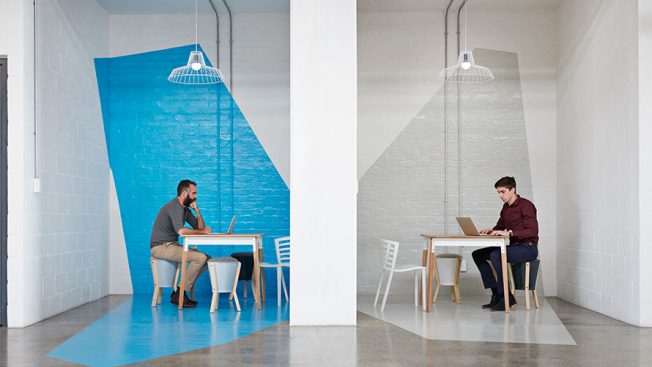Don't miss ADWEEK House at Cannes, June 16-19. Join us as we celebrate our 45th anniversary and explore the industry's now and next. RSVP.
Fifty years ago, Bill Bernbach had the bright idea to pair copywriters up with art directors, and creative teams have been the backbone of the advertising industry ever since. These relationships require as much trust, understanding and emotional dexterity as any marriage, and they hold a huge influence over the trajectory of a creative’s career. But while you’ll find a lot of literature on the creative process itself, it’s not easy to find advice on how to create and maintain a successful creative partnership.
To help you navigate the rough seas of the creative process, here are five guiding principles to help you deal with creative tension and turn it into award-winning work.
Find your opposite
The whole point of a creative team is to achieve something together that you wouldn’t be able to achieve separately. It’s an opportunity to bolster the skills that you lack. If you’re weak at presenting, find someone who can talk the leg off a chair. If you’re more of a big-picture person, find someone who is obsessed with detail. Bottom line, you need to bring two people together that have different skills as well as different perspectives. It’s a balancing act that requires finding someone that you can stand being in the same room with but who will genuinely surprise you with the ideas they bring to the table. The worst thing you can do for your creative development is team up with someone who shares your exact worldview and weaknesses.
Agree on a game plan
You can have different worldviews and perspectives, but you’ll need to have the same ambitions. The tension that comes from disagreeing about an idea is healthy, can be resolved and generally leads to better work. The tension that arises from one team member wanting to work until 3 a.m. while the other goes home at 5 p.m. isn’t healthy and can lead to resentment on both sides. If you’re breaking your back trying to get a Titanium Lion on your resume, find a creative partner who is going to help you get there, not hold you back.
Value the arguments
Arguing is an art you need to master. Treat your arguments like a sport, and respect your opponent. They are a natural byproduct of two differing world views being tested against each other. The goal is not to win, but to find and agree on the best way forward. Remember that you’ve partnered with this person because of their ability to bring you an alternative perspective. So give that perspective a chance, even if it doesn’t immediately make sense. Remember, your partner might not be doing the best job explaining what they have in their head, but that doesn’t mean it isn’t valuable. Don’t dismiss their ideas until you fully understand them. Arguments also force you to interrogate and pressure test your own ideas. You don’t really have a good idea until you can articulate and defend it, and if your partner is too agreeable, then you’re missing the chance to properly stress test your ideas.
Present a unified front
Once you’ve agreed to move ahead with an idea, it belongs to both of you. You share in its success, and you share in its failure. You owe it to your creative partner to present every idea with all the enthusiasm you can muster. Even if you’re still not 100 percent convinced about one of their concepts, give it every chance of success and have your partner’s back if it comes under attack. Throwing your partner under the bus when one of their ideas is shot down only makes you look petty and your partnership look weak. Plus, it’ll create underlying resentment that will undermine the trust and stability of your partnership going forward.
Repair the wounds
At the end of the day, you’re human, and chances are you’re not going to get all this right. You’ll have good days, and you’ll have bad days. Creative tension can—and will—lead to arguments that go a little too far or become a little too personal. When the dust settles, be the first to apologize and extend the olive branch. Don’t let things fester. Just like any important relationship, you should deal with fallout sooner rather than later. Remind yourself that you’re on the same team and ultimately want the same things. You may have different ideas on how to get there, but after all, that’s the whole reason you’re together in the first place.
If you keep these principles in mind, you’ll have a productive, robust creative relationship built on a solid foundation of trust and respect. The right creative partner will boost your career and take you to creative territories you’d never have imagined in your wildest dreams. But you have to let them steer the way every now and then. And you have to both survive the journey.








